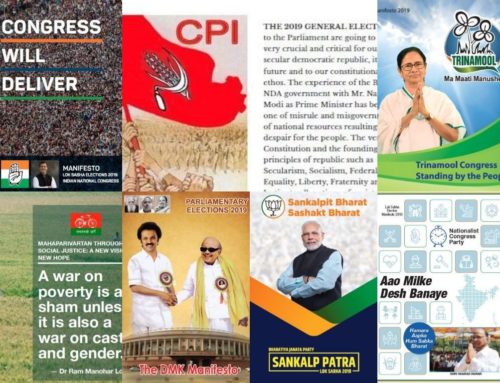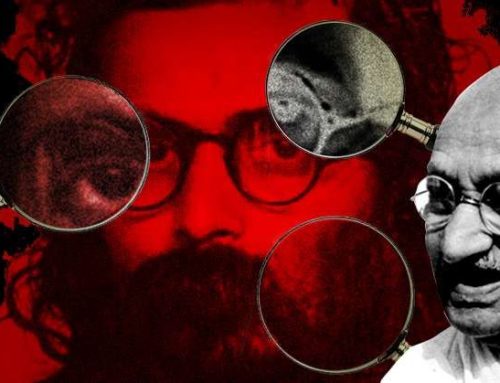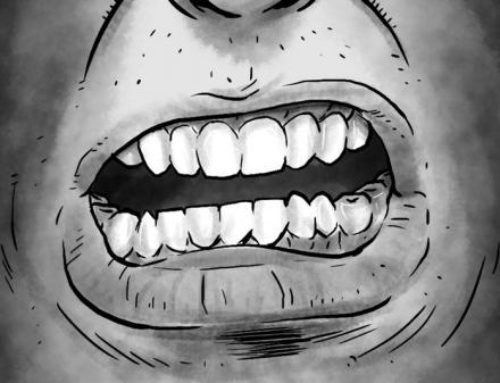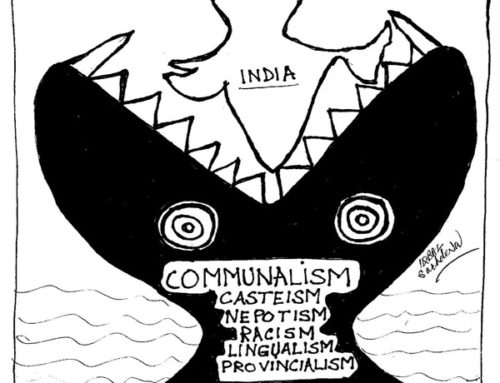Dalits in Gujarat- A picture of inequality and violence
Neha Dabhade
(Secular Perspective August 1-15, 2016)
On 11th July, seven members of a Dalit family were beaten up by manav bhakshaks-cum-extortionists representing themselves as gau rakshaks in Una town of Gujarat. They were mercilessly beaten up with iron pipes, knife and sticks for skinning a dead cow in Mota Samadhiyala village. The Dalits were then taken to Una town where they were stripped and flogged publically (Indian Express, 2016). This brutally shocking incident reflects violence and derogatory attitudes towards Dalits in Gujarat. There were equally strong reactions to this ghastly and barbaric incident. Highly respected Dalit writer Amrutlal Makwana returned his Dasi Jeevan Shreshth Dalit Sahitya Kruti award. Dalit youth in Gujarat took to the streets to register their protest by torching buses and blocking roads and highways. Scores of Dalits attempted suicide. About 1000 Dalits wanted to embrace Buddhism from Banaskantha district. In Surendranagar, Dalits refused to dispose of cattle carcasses from the roads giving anxious moments to the administration (India Today, 2016).
The response of the police was tardy. The police could have prevented the public flogging of the Dalits since they had already apprehended the car to which the survivors were tied and were taken for public flogging. The police also took inexplicably long to file the FIR. Shockingly the police filed an FIR against the survivors; much like what happened to Mohammad Akhlaq’s case and registered a complaint against the manav bhakshaks only after the video of the public flogging went viral and Dalits started agitating. After the inadequacies of the action taken by the police was pointed out, Una police inspector and an assistant sub-inspector (ASI) in charge of the area where the incident had taken place were suspended from duty (Indian Express, 2016). Anandiben Patel, the Chief Minister of Gujarat visited the survivors only after 9 days of the incident when it created ripples in social consciousness and the protests of the Dalits became an issue of law and order. Electoral prospects of BJP in the upcoming UP elections have a part to play behind her visit.
BJP led Government’s response reflects their attitude towards the Dalits. In the year 2015, when the Union Minister of State for External Affairs V. K. Singh asked about the murders of Dalit children in Faridabad, he likened Dalits to dogs by stating that, “If somebody throws a stone at a dog, then the government is responsible. It is not like that”. Recently, Rajnath Singh, Union Home minister termed attacks on Dalits as ‘social evil’, clearly shirking off the State’s responsibility for enforcing laws to prevent atrocities against Dalits. Rajnath Singh also stated that “during the Congress rule in Gujarat, the number of cases of atrocities against the Dalits was high. There has been a sharp decline in it since the BJP came to power” (Business Standard, 2016). However statistics point out otherwise. There has been a 19% increase in atrocities from May 2014 (Indian Express, 2016).
In this scenario, actions of some BJP leaders qualify for mere tokenism and empty words. BJP Chief Amit Shah recently took a dip with Dalit Sadhus at the Kumbh for instance. “The BJP is the only party that believes in strengthening Indian culture and fosters the feeling of world as one family”, he claimed. How can this be believed in the face of blatant inhumane untouchability so rampantly practiced in Gujarat? The narrative of Dalits in Gujarat is weaved by experiences of discrimination and untouchability. In 98.4 per cent of the villages surveyed, inter-caste marriage was prohibited, and inter-caste couples would be subjected to violence and would often have to leave the village. In 98.1 per cent of the villages, a Dalit could not rent a house in a non-Dalit locality. In 97.6 per cent of the villages, Dalits touching the water pots or utensils of non-Dalits was considered defilement. In 97.2 per cent of the villages, Dalit religious leaders would never be asked to perform a religious ceremony in a non-Dalit area. This was revealed in a study conducted by Navsarjan organization in 1589 villages of Gujarat (Katakam, Anupama, 2014). Did the state take any action against this widely prevalent untouchability? Dalits from 77 villages were forced to migrate from their villages due to social boycott. This issue was investigated into by the National Human Rights Commission (NHRC) which cited the non-cognizance of the complaints of the Dalits by the police in the state, inaction on the part of the police in terms of investigation and low conviction rate in atrocity cases as a major concern. Instead of expressing concern on this issue and taking notice, the State refuted these findings (Dasgupta, Manas, 2012).
How do we make sense of the treatment of Dalits by the BJP and incidences like Una? The ideology of Hindutva that is the very foundation of BJP rests on notion of hierarchy. This hierarchy places the Dalits at the very bottom. This social order based on social inequality and unchallenged brahmnical supremacy is the core of Hindutva. Hindutva is a supremacist ideology. This ideology which is deeply integrated into the policies of BJP disempowers Dalits culturally, politically and economically. This disempowerment takes place through different ways. One way is to set up symbols of nationalism. The symbols of nationalism thrust down the throats of the rest to impose homogenized culture are also symbols that privilege the upper caste and reproduce hierarchies. Cows, Saraswati Vandana and yoga for instance amongst others are used by Hindutva as litmus test of religiosity and nationalism. Hindutva ideology sets norms and benchmarks which are essentially upper caste and indicate total exclusion to the traditions and practices of other communities like the Dalits for the whole society. These norms are to be followed to gain social inclusion and prove one’s nationalism.
Take cow for example. Historically the Dalits have been made to dispose of the cattle carcasses and also eat the same. Touching a dead animal was considered polluting for upper castes and a job fit only for the Dalits. Even today the Dalits have very little option but to clean sewers and dispose of dead animals. This takes one into the discussion on prevalent economic discourse in Gujarat. The crony capitalism as is playing out in Gujarat is emphasizing excessively on private investments, infrastructural growth and corporatization of agriculture. The common resources which form basis of livelihood for the subaltern communities are snatched away and given to corporates like Adanis. This has uprooted the livelihood, exacerbated inequalities and rendered the Dalits, fishermen and adivasis jobless, and displaced. The tall claims made by the State notwithstanding, the state has experienced a negative employment growth in manufacturing and service sector from 2005 to 2010 which has pushed Dalits into casual employment leading to dependence on informal sector. Urban areas show greater inequalities- rise in poverty for SCs and STs (Menon, 2013). This further privileged the landed upper castes. Although the Scheduled Castes Sub Plan (SCSP) mandates that a state must allocate monies in proportion to the SC population of the state (7.09%), the Gujarat government has not done so in the last ten years. In a July 2015 report, the state shockingly argued (in stark violation of the SCSP guidelines) that “it was very difficult to take up area based development exclusively for the SCs”! (Deshpande, Pushparaj; SDJM, Prasad, 2016). MNREGA scheme which is one of the tools for empowerment and livelihood of SCs and STs in villages has been diluted by allocating incrementally less budget for it and implementing it in lesser districts. This has adversely hit the SC and STs. Roughly 18 lakh SC and ST households completed the full 100 days of work under MGNREGA in 2013-’14. But in 2014-15, around seven lakh SC/ST families availed of the full 100 days (Indian Express, 2016).
In another incident in Ahmedabad, Human Development Research Centre (HDRC) posted an advertisement on its notice broad for hiring sanitation workers. The advertisement stated that candidates from general category would be given preference. This drew ire from Hindutva organizations like Rajput Shaurya Foundation (RSF) and Yuva Shakti Sangathan (YSS). These organized vandalized the HDRC office and caused damage. They accused HDRC for dividing society and hurting religious sentiments (Times of India, 2016). This reflects the deep seated attitudes of Hindutva organizations for Dalits, who they consider solely worthy of most denigrating work like manual scavenging and sanitation. Ironically when international organizations like UN advocates for abolition of manual scavenging, former Chief Minister of Gujarat, Narendra Modi, in his book, Karmayog published in 2007 is of the view that Valmikis do not undertake scavenging for livelihood but because its spiritual in experience! (Gatade, 2013). One can’t help wondering if manual scavenging presents a window of spirituality then why do the upper castes resist this opportunity and still want the Dalits to engage in manual scavenging? And why doesn’t the State take a stand on this and encourage everyone, caste no barrier, to undertake such jobs?
Dalit youth who want to break this vicious cycle of discrimination are seeking avenues of education in order to find better options and dignified life. But here too, Dalit students who dare to critically look at prevalent social hierarchy and inequalities are victimized by right leaning student bodies like ABVP or College management as seen in the case of Ambedkar Periyar study circle and Rohith Vemula’s case. The voices of dissent in these cases were termed as anti national and brutally curbed, further disempowering the Dalit youth. In the same way, yoga, the much talked about symbol of nationalism is something that Dalits haven’t been able to identity given the different cultural spaces yoga is exercised historically. Dalits, with the arduous physical labour that they undertake wouldn’t possibly need Yoga or have the energy to do it when they are plagued with poverty and hunger. Similarly forcing Dalits to observe Saraswati Vandana is a cruel joke since Dalits were never allowed to get education or knowledge. Even today there are schools in Gujarat where Dalit children are discriminated leading to 32.4% of Dalit children being out of school from a total of six million children according to the India Exclusion report of 2014 (Video Volunteers org, 2015).
In order to be accepted in the Hindu fold and ranks of Hindutva organizations, the Dalits are expected to join the war against Muslims as seen by Hindutva. By creating an illusion of inclusion in the Hindu fold and semblance of power by pitting them as superior to Muslims, the Hindu Nationalist groups are coopting Dalits in violent conflicts against Muslims. They are mobilized against the Muslims by projecting the Muslims as anti national and the common enemy. Dalits are made foot soldiers who can be easily apprehended by the criminal justice system of India post conflict.
Yet, the Dalits have to prove their nationalism by adhering to all these norms/ symbols in a hope that they might also get some crumbs of privileges and opportunities thrown at them by the power establishment controlled by the upper castes, if they toe the line. Also there is no political alternative in electoral calculations for the Dalits so it makes sense to support the BJP since they can offer some modicum of safety and privileges if Dalits engage with them on their terms. If they fail to conform, they are beaten up and shamed as seen in the Una incident. And the state will not have their back. The job of beating the Dalits into submission is achieved by vigilante groups which are given impunity and privileges by the state. This emboldens them to perpetuate violence without fear of justice or punishment.
In 2000, in Gujarat, there were 13,293 cases registered in courts under the SC/ST (Prevention of Atrocities) Act: 1989, all of which remained pending at the courts at the end of the year; none of them ended in convictions or in acquittals (Atrocities and interventions). As many as 409 incidents of atrocities on Dalits were reported till April this year. The State Crime Records Bureau has on record around 14,500 cases of attacks on Dalits since 2001, making an annual average of over 1,000 cases with at least three cases daily in Gujarat. Dalit rights activists say the sense of impunity spawns from the fact that the conviction rate is as low as 3 to 5 per cent (Indian Express, 2016).
Can this inaction of the State apparatus be condoned and no blamed apportioned to the government? This willful neglect of the welfare and safety of the Dalit community reflects the true nature of Hindutva and intentions of BJP. While it wants to make use of the Dalit community as pawns in its politics of hatred, it doesn’t wish to treat the Dalits as equals. Dalits will have to be in a position of inferiority and servility so that the prevalent social order is not disturbed. The Dalits are disempowered and decitizenised as seen from the instances above. Dalits don’t face discrimination and violence because caste system is merely a ‘social evil’ restricted to the domain of society. It is the duty of the State to protect the Dalits and enforce laws to bring the culprits to the book. This duty it can’t abdicate by merely paying lip service against violence faced by Dalits.
There is need of a strong Dalit movement in India. Notwithstanding the difficult circumstances in the country fraught with rampant domination of vigilante groups and an unyielding government, civil society organizations need to engage with the Dalits. Interventions aiming at awareness building around the rights of Dalits and organizing them will give them some traction to fight for their rights. There are laws to address injustices against Dalits and helping survivors to access legal aid might open up a promising avenue for redressal for the marginalized community. Constant monitoring and documentation of the violence against Dalits and engaging with the state and international organizations equipped with moving accounts of Dalits might force them to take notice and take action. A sustained campaign against untouchability and logical critique of the state model of development must be challenged in legislatures. But above all, emancipation will be reality for Dalits when all oppressions are challenged and all oppressed join hands in solidarity with vibrant meaningful intersectionality. Only then will democracy be meaningful to this decitizenised group which has been relegated to the margins of the society for too long.
————————————————————-
Centre for Study of Society and Secularism
Mumbai.






